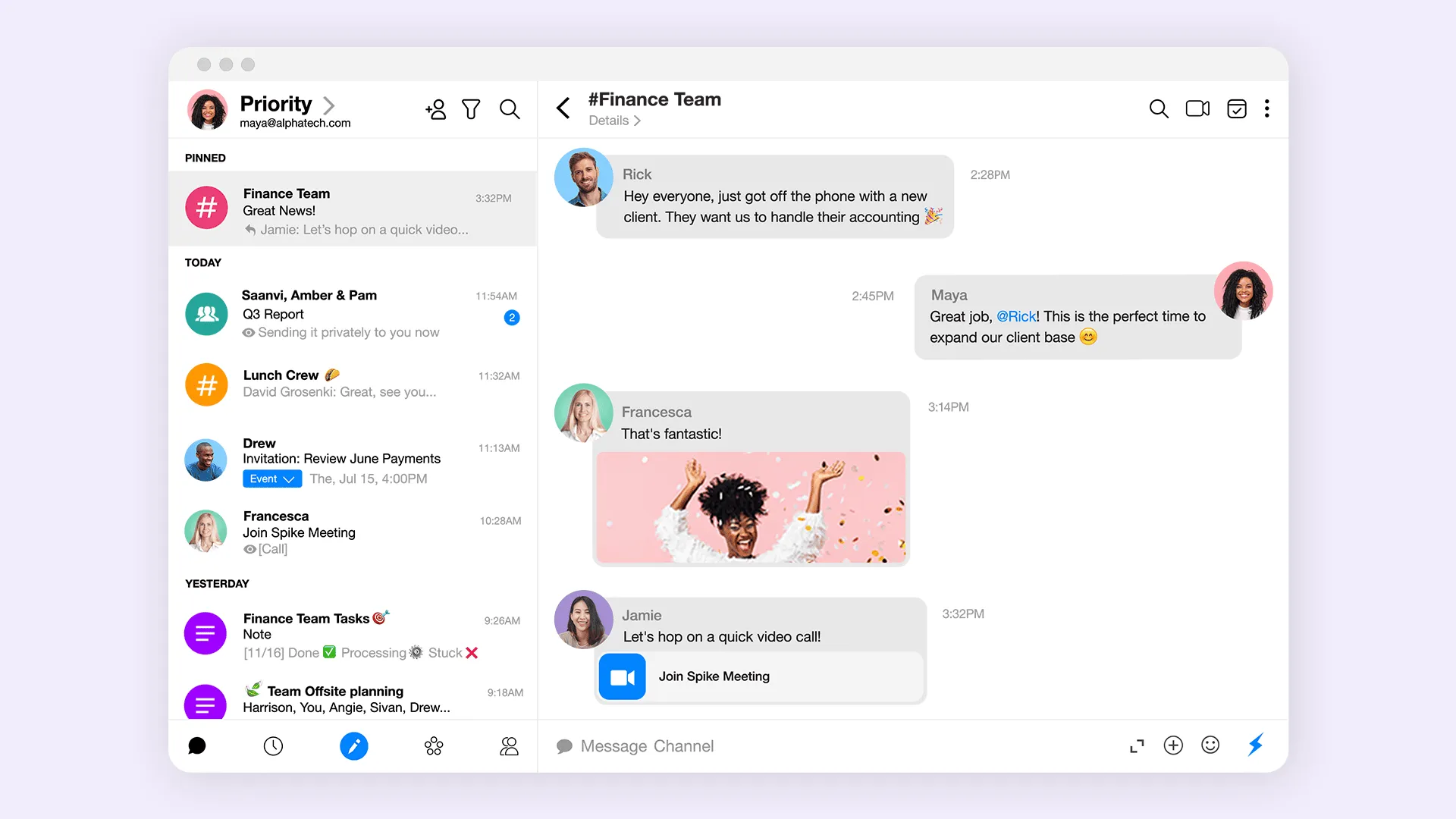Why email overload isn’t a volume problem, it’s a context problem
Inbox zero doesn't solve your email problem; it hides it. What you need is an intelligent system that understands context and preserves continuity.

Are you struggling with email overload?
You’ve probably tried Inbox Zero. And maybe, for a while, it felt like progress until it became just another task. An end in itself rather than a means to make your workload easier.
Then came the 4Ds. Delete, delegate, defer, do. But instead of relief, they delivered decision fatigue.
So you doubled down: folders, filters, notifications off, scheduled time blocks.
Still overloaded? Of course you are!
Because email overload isn’t, and never was, a volume problem. It’s a context problem.
In this piece, you’ll learn:
- Why traditional email productivity tactics fail even when applied correctly.
- How email overload stems from cognitive fragmentation, not just message volume.
- The psychological cost of reconstructing context manually.
- What a true context-aware communication system looks like in practice.
- How tools like Spike reduce mental strain by preserving continuity across threads, time, and tasks.
Why email management is so exhausting even when you’re “doing it right”
The fatigue you feel from email isn’t caused by screen time or message count, it’s caused by something more taxing: context switching and memory load. Every time you open a new thread, your brain is forced to:
- Reconstruct past conversations.
- Recall who’s involved and what decisions were made.
- Determine what’s still unresolved and what to do next.
Meanwhile, you’re making hundreds of micro-decisions daily:
- Do you respond now or later?
- Does this go in a folder?
- Can it be delegated or snoozed?
- What happens if you forget?
You might think you’re just checking email. But your brain thinks otherwise.
Every message demands something of your working memory, the part of your mind that temporarily holds and processes information. But working memory has strict limits. Psychologists estimate it can hold only three to five items at once.
You see, the real issue isn’t how many messages you receive. Whenever you open a thread, it’s the mental effort required to reconstruct who said what, what decisions were made, and what still needs your attention. Email scatters context; without context, your brain has to fill in the gaps. That’s what’s exhausting. Not the inbox itself, but the constant cognitive load of making sense of it.
Your brain can handle complexity. In fact, it thrives when patterns are clear. But email breaks those patterns. Each thread becomes a puzzle: half-finished thoughts, scattered replies, missing decisions. You’re not just reading, you’re investigating and playing detective in your inbox. And as that burden builds, so does the fatigue.
Why don’t common email tactics solve the problem?
By now, you know the real source of email fatigue: it’s not volume, it’s the mental strain of reconstructing scattered context.
So why do the most common productivity methods you’ve likely tried still overwhelm you?
Let’s take them one by one.
Time blocking doesn’t reduce the effort. It just compresses it. You’re still switching between fragmented threads, still trying to reorient yourself in every conversation. Only now you’re racing the clock, forcing cognitive work into rigid slots without actually making it easier to think.
Labels and folders offer the illusion of control. But they also silo information. When a single conversation gets split across threads, people, and tags, you’re left stitching it all back together. You’ve created a filing system, not a framework for understanding.
Inbox Zero provides a fleeting sense of accomplishment. But marking a message as done doesn’t mean its meaning has been absorbed, or its task is completed. Its closure without clarity. The inbox is empty, but the work is still scattered.
These systems don’t fail because they’re flawed in theory. They fail because they weren’t designed to support cognitive continuity. They may help you look organized, but leave your brain to do the hard part alone.
And that’s the root problem: your tools don’t carry context forward. So every time you return to your inbox, you start from scratch.
At best, they help you cope. But coping isn’t clarity.
From overload to clarity: Why context is the missing link
At this point, it’s clear: traditional email strategies only manage symptoms. They organize information but don’t reduce the mental cost of making sense of it.
To solve the problem at its root, we need to reframe how we think about communication. It’s not just a flow of messages. It’s a form of cognitive labor, and it’s being mismanaged.
Let’s break it down using the OODA loop: (Observe. Orient. Decide. Act.)
- Observe: The real source of fatigue isn’t volume. Context fragmentation is the loss of continuity between ideas, people, and actions.
- Orient: Recognize that filters, folders, and time blocks only scratch the surface. They treat overload as an organizational issue, not a cognitive one.
- Decide: Choose systems that sort and understand your messages, as well as tools that track meaning across time, threads, and responsibilities.
- Act: Avoid manual upkeep. Invest in tools that preserve continuity so your brain doesn’t have to.
This means abandoning the idea that “better sorting” is the solution. The real need is intelligent synthesis tools that don’t just organize data but connect it, tools that retain contextual memory across your communication so you’re not forced to rebuild it every time.
Imagine a continuity layer: a system that understands the relationships between conversations, remembers decisions, recognizes dependencies, and intelligently reminds you when something matters again.
You’ve experienced this in real life.
Think about a good in-person conversation. You don’t have to remind someone what they said two minutes ago, or repeat what was already agreed upon. There’s flow. You stay oriented. The conversation carries itself forward.
Email breaks that.
A context-aware tool changes that. It carries the who, what, when, and why forward so your brain doesn’t have to. It removes the burden of reconstruction and restores clarity in motion.
That’s the shift we need, not from clutter to order, but from fragmentation to continuity.
What context-aware communication actually looks like
So what does this shift feel like in daily life? In a word: relief.
Here’s what changes:
-
Instant understanding.
Open a long, complex thread and immediately see:
“Here’s what happened, what was decided, and what’s needed from you.”
No more scrolling. No more piecing things together. Just clarity, on arrival.
-
Effortless prioritization.
Your inbox surfaces what truly matters based on who’s involved, what’s been discussed, and how urgent the task actually is. Not just what’s new, but what’s relevant.
You don’t sort. You act.
-
Reliable follow-through.
The system tracks what needs a reply, what’s unresolved, and what’s time-sensitive. There are no flags, no digging, and nothing falls through the cracks.
-
Connected knowledge.
Messages, meetings, documents, and tasks live in the same context. Conversations become integrated, instead of toggling apps or hunting for missing pieces. It’s all there, in one flow.
The result is tangible.
Less anxiety. Faster, more confident decisions. Fewer mistakes.
Most importantly, there is the return of cognitive space, the mental breathing room to focus on work that actually matters.
That’s not just productivity. That’s progress!
How Spike provides context, clarity, and control

This vision of effortless context and seamless continuity is the foundation Spike was built on.
Spike doesn’t just reduce inbox noise. It tackles the real problem: cognitive overload. It reimagines email not as a stream of messages to manage, but as a conversation-first workspace that reflects how your brain naturally tracks meaning, flow, and follow-through.
Spike AI provides a layer of intelligence integrated into your inbox that helps you focus on what matters without forcing you to dig, scroll, or remember.
With Spike, you get:
- Instant clarity, with smart summaries that help you catch up in seconds.
- Reliable follow-through, immediate recognition of what was said, who’s responsible, and what’s still pending.
- Context-based prioritization, so your inbox surfaces what’s important, based on relevance, not just recency.
- Seamless continuity connects messages, calendar events, notes, tasks, and files into a single, unified flow.
You stop managing threads and you start moving through work with clarity.
Spike isn’t another set of rules or filters; It’s not trying to help you “beat” your inbox. It’s a fundamentally different approach that puts context and continuity at the center, where they belong.
Stop managing workarounds, start working in flow
The real problem isn’t volume; it’s fragmentation. And no amount of discipline can fix a system that forces you to rebuild context every time you open your inbox.
We don’t need more control. We need more continuity.
It’s time to move beyond inbox management as a goal. Not because it’s impossible but because it was never enough. The real goal is clarity and flow. A sense of control is rooted in understanding.
Ask yourself: Are your current tools helping you think or just helping you cope?
When we stop patching broken workflows and start demanding context, everything changes. Not just how we manage email but how we focus, decide, and work.
That’s what context-aware communication unlocks: fewer barriers, clearer priorities, and space to do the work that matters.




